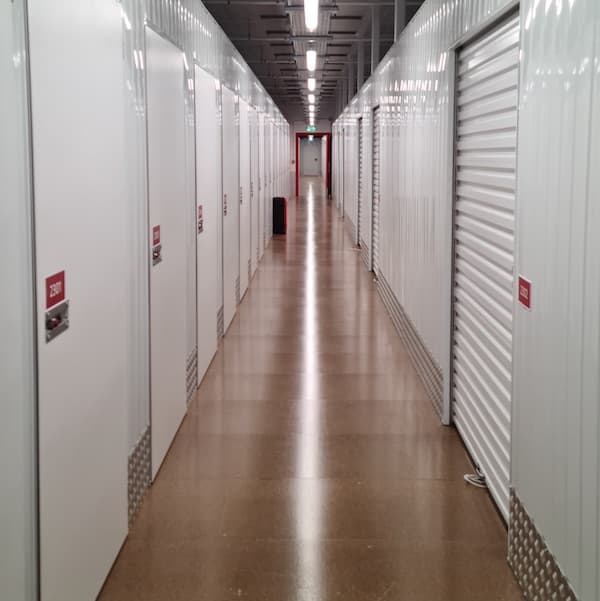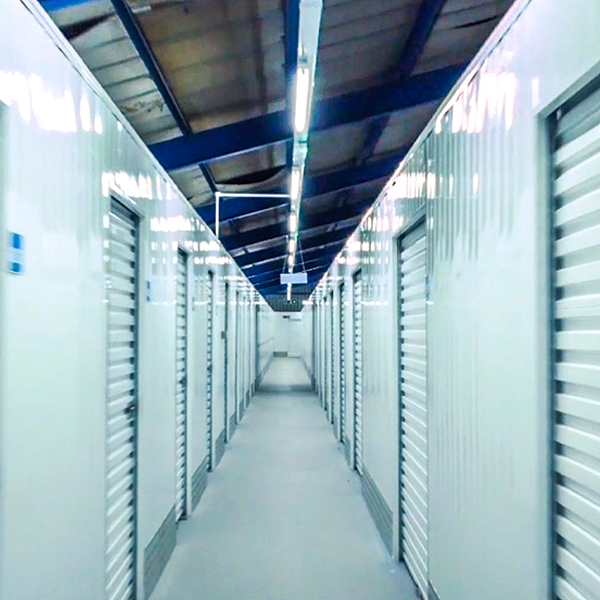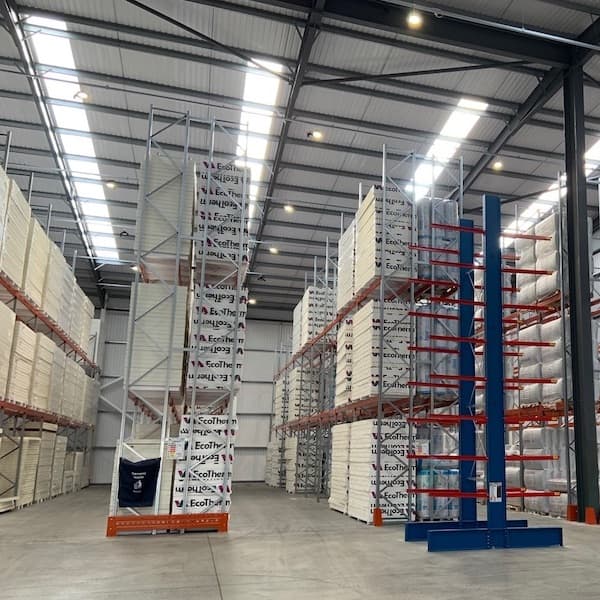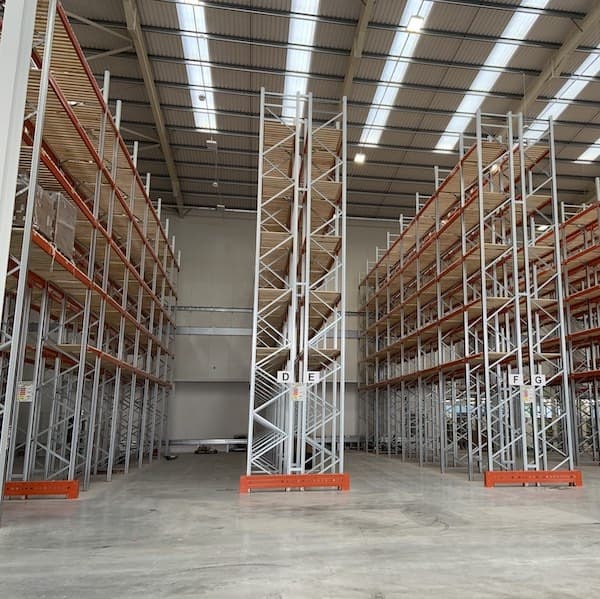- Mezzanine Floors
- Solutions
- Multi-Tier Mezzanines
- Mezzanine Pallet Safety Gates
- Mezzanine Staircases
- Mezzanine Handrails and Balustrades
- Mezzanine Decking
- Fire Protection for Mezzanine Floors
- Mezzanine Lift Shaft Design and Installation
- Resources
- Mezzanine Floor Calculator
- Mezzanine Floor Regulations and Building Control
- Self-Storage Mezzanine Floors
- Self-Storage Units
- Resources
- Self-Storage Site Selection Information
- Calculating The ROI of Self-Storage Conversions
- Planning for Automation in Self Storage
- Racking & Shelving
- Solutions
- Cantilever Racking
- Pallet Racking
- Coil Racking
- Longspan Shelving
- Tyre Racking
- Kimer Racking
- Live Storage Racking
- Drive In & Drive Through Racking
- Clip Shelving
- Mobile Shelving
- Custom Fabrications
- About Us
- USS Case Studies
- Self-Storage Fit-out For Raked Ceiling Building
- Mezzanine And Staircases For Entertainment Venue
- New Mezzanine And Staircases For Major Retailer
- Mezzanine Pallet Safety Gate
- Self-Storage Fit-Out Project For Brand New Facility
- Warehouse Racking, Wire Mesh & Shelving for New Warehouse
- Self-Storage Partition System & Components Installation
- Self-Storage Store Mezzanine And Staircases
- Multi-Tier Mezzanine For Logistics & Distribution Facility
- Warehouse Plant Platform
- Self-Storage Facility Space Expansion
- Mezzanine Floor For Distribution Warehouse
- Bespoke Feature Staircase & Mezzanine
- Single Level, Multi-Use Mezzanine
- Mezzanine For A New Building
- Mezzanine Floor For Plumbing Supplies Warehouse
- New Racking System and Mezzanine Floor
- Car Park Conversion To Self Storage Facility
- Pallet Racking and Cantilever Racking For Warehouse
- Two Mezzanine Floors For Self-Storage Facility In Birmingham
- Our Accreditations
- Contact Us
- USS Case Studies
The Latest Blogs From USS
Warehouse Management Challenges
read

How are businesses in the warehouse and logistics industries solving today's warehouse management challenges?
We work with a wide range of clients, installing storage solutions within warehouse spaces, so we know from experience that every warehouse has unique challenges and issues.
Despite these variations, specific warehouse management problems tend to recur repeatedly across facilities of every size, shape, and type. In this article, we’ll look at some of these challenges, the solutions we recommend, and examples various businesses have adopted.
Inventory
If you don’t have an accurate real-time picture of the inventory held by your warehouse, you could find yourself dealing with a range of problems, from lost sales and stock shortages to overstocking, leading to a lack of available space. Issues in tracking inventory correctly can arise from factors such as the same SKU being stored in multiple locations and a lack of standardisation across the warehouse. Additionally, frequent shifts in the mix of inventory moving through a warehouse and technical issues such as faulty barcode scanners can also contribute to tracking challenges.
The solutions to problems with inventory accuracy should start from the ground up, with staff training emphasising that inventory accuracy directly impacts business outcomes. The existing inventory processes need to be audited to ensure consistent practices and eliminate redundant procedures in the warehouse. It is important to implement accurate stock-taking and real-time monitoring from the loading dock onward.

The use of technology to facilitate the kind of real-time tracking of stock needed to ensure wholly accurate inventory is something we’ll examine in more detail in the section on warehouse management systems.
Loss and Damage
Stock losses and damage incidents in a warehouse can be caused by factors ranging from human error and theft to accidents and poor packaging.
Accidental damage to stock can be minimised through the introduction of staff training on issues such as stock handling and best practices for storage. At the same time, loss and theft can be handled via real-time inventory tracking and, in some cases, radio frequency identification (RFID) tagging. In any busy warehouse, however, incidents involving stock loss or damage will still occur, and the reports of any incidents need to be centralised and analysed to identify recurring issues and analyse trends.
Employee Turnover
We’ve written before about the issue of high employee turnover in the warehouse and supply chain sector and the fact that these businesses, in general, can struggle to attract and retain employees.
The impact on efficient operations within the warehouse makes itself felt in two ways. First, the employees in the warehouse don’t have the experience required to operate at maximum efficiency. Second, a disproportionate amount of management time and effort needs to be put into training new staff. The obvious solution to this problem is to pay employees more for their work.
Still, even if this is easily manageable in the current operating budget, it may not be the silver bullet it appears to be.
Warehouse managers could consider introducing more generous remuneration for the work. In addition, they need to open clear lines of communication to ensure employees understand exactly what the job involves from the interview and hiring stage onward. It's also important for them to strive to improve the working conditions within the warehouse.
The latter can range from enhancing the ergonomics of things like packing stations to ensuring that employees work in an environment with an acceptable temperature, ventilation, lighting and noise levels. In addition, the more advanced warehouse spaces will involve the introduction of automation to handle repetitive tasks, improving employee morale and freeing team members to concentrate on work, thus delivering higher value and greater job satisfaction.
Equipment
Equipment failure within a warehouse risks lost productivity, delayed item processing, and workplace accidents, so warehouse management must take a proactive approach to maintenance. Waiting for issues to occur means dealing with the problems those issues cause. In contrast, regular equipment monitoring and maintenance will ensure that potential problems are spotted before they impact. Often, warehouse managers choose to outsource equipment maintenance, relying on the expertise of third-party vendors and suppliers.
Still, it makes sense to retain at least some of the skills needed to maintain equipment in-house. This will ensure a holistic, cross-functional approach to equipment maintenance, with regular inspections helping prolong the life of warehouse equipment. It should be borne in mind that the practicality of delivering inspections and maintenance work within a busy warehouse demands coordination and communication across a range of departments. This includes logistics, inventory, and hands-on operational teams.

Done right, it can help ensure equipment is inspected and maintained without disrupting the tight schedules modern supply chains rely upon.
Warehouse Management Systems
Introduce a warehouse management system (WMS) to gather many solutions to common warehouse management challenges.
All too often, when thinking about the use of technology and automation to maximise warehouse efficiency, the conversation turns to the example of Amazon and its fulfilment centres. This is understandable. Amazon tends to operate at the cutting edge of what automation can do to deliver increased warehouse efficiency. What they do today is what most warehouses will be doing in a few years as the technology is refined and becomes more affordable. However, it is also slightly unhelpful as Amazon tends to operate with the kind of budgets and at a scale that most warehouse managers can’t practically aspire to.
A WMS, however, isn’t a one-size-fits-all solution. It can be implemented to maximise operations within your warehouse, provided the ground has been prepared effectively.
A WMS will improve the accuracy of data collected on items as they move through your warehouse, using tracking and software solutions to streamline inventory management and collect data. This data can then be leveraged to identify trends, increase efficiency, and spot the areas within a warehouse where bottlenecks might be occurring.
A WMS could be custom-built from scratch to meet the precise requirements of your warehouse, but this is likely to prove an expensive and time-consuming endeavour for many organisations. More practically, it’s possible to purchase a ready-made WMS and work with your internal IT team or third-party vendors to integrate the WMS with existing systems. You can also add any features your operation needs.
Winning Features of a WMS
The features of a WMS might include the following:
Warehouse Navigation – Barcode reading, and RFID technologies could be used to record the location of items within a warehouse to make it easier for employees to find them. In a large warehouse, multiple examples of the same item might be stored in different places, which is the kind of random storage solution favoured by Amazon. Knowing where items are located might not be enough to speed up collection. A WMS can be tailored to use the data on the location of employees and individual items (particularly when one employee is tasked with collecting several different items from one order) to create an optimal route for employees to use for each collection.
Integration – A WMS needs to integrate with suppliers' inventory systems and internal systems such as accounting software and ERP (enterprise resource planning) software to be truly effective. Warehouse managers should work with experts in electronic data interchange (EDI) to ensure that integration of this kind runs smoothly. This term covers the ability of businesses to communicate digitally through the adoption of shared technical standards. Integration of this kind plays a vital role in the implementation of the type of just-in-time (JIT) supply chains which apply across a wide range of industries.
Superior Data Handling —The WMS software must handle large amounts of data in real-time to enable inventory tracking and process automation. In addition to this day-to-day advantage, a WMS will make it possible to analyse the data being gathered. This will help to identify trends in the warehouse's operation and spot problems or opportunities to make things more efficient. It should be noted that an effective WMS will take some time to incorporate across a warehouse and that trying to cut corners will only cause problems further down the line. As a rough rule of thumb, a WMS system will require six months of work before going live. This is then followed by another two or three months, during which issues and problems are ironed out before the positive operational impact of the WMS becomes evident.

A Successful WMS Implementation
Factors that help to ensure the successful implementation of a WMS include:
Getting Buy-In Across the Business — Ensuring employees are involved in the planning process from the earliest stages. Not only will this enable management to answer any questions and deal with concerns, but it will also mean tapping into the kind of insights that those who work on the ‘shop floor’ are uniquely placed to provide.
Establish Reliable Connectivity — The best connectivity will enable people to move through even large areas without losing connectivity to the system. Many large-scale WMS solutions are now cloud-based, so your warehouse might need multiple efficient Wi-Fi points to ensure full coverage.
Case Studies
Buy Wholefoods Online
Buy Wholefoods Online was founded as an e-commerce business in 2007 after one of the founders spotted the opportunity to provide organic and whole foods online for homes and businesses across the UK.
The business started in a garden shed before growing to become a platform offering over 6,000 individual items. One barrier to maximum warehouse efficiency was that picking items from the shelves was a completely manual process, with pickers ticking items off from a paper list. The WMS solution they opted for meant that pickers were given a digital pick list sent directly to their mobile scanner, complete with optimal routes through the warehouse.
Bits ‘N’ Bobs
Bits ‘N’ Bobs is a wholesaler based in Manchester, providing fast-moving consumer goods to convenience stores across the Northwest. Initially, stock control would manually track the supplies to vans as reps called into the warehouse to collect stock for selling to retailers. This tracking relied upon paper-based records, spreadsheets and weekly stock-takes. It was simultaneously time-consuming and inefficient, resulting in errors and inconsistencies thanks to a lack of visibility, inefficient stock management and a lack of accountability regarding issues such as products sold, and cash collected.
The solution was implementing a van sales management system, which meant that management could track stock movements in and out of the warehouse in real time. In addition, van sales representatives carried mobile devices connected to the central system, enabling them to record transactions, reconcile cash balances and compile end-of-day reports.
Cross Docking
Cross-docking does not refer to a particular business. It refers to a distribution system that can streamline operations within a warehouse and, therefore, along the supply chain as a whole.
Cross-docking refers to the practice of receiving goods from suppliers into a warehouse and moving them directly onto an outbound vehicle without storing them in the warehouse.
It is particularly useful in industries involving perishable goods that must be delivered quickly and those with consistently high customer demand. Examples of businesses implementing cross-docking solutions include Roche Diagnostics, Amazon, and Mainfreight, a New Zealand company that provides cross-docking facilities for third-party operatives.
A cross-docking solution could be implemented alongside a more traditional warehouse approach for a warehouse that handles a range of items, possibly for multiple vendors. This would enable the space within the warehouse to be utilised in the most efficient manner possible, as a percentage of goods are handled purely within the loading bay area.
This blog is for information purposes only and should not be construed as legal or financial advice and not intended to be substituted as legal or financial advice.
Find Us
S & L United Storage Systems Ltd
United House, The Street
Takeley, Bishop's Stortford
Hertfordshire, CM22 6QR
Company No. 1313816
VAT No. 291616253Say Hello
01279 871 787Copyright © 2025 S & L United Storage Systems Ltd. All rights reserved.
- About Us






